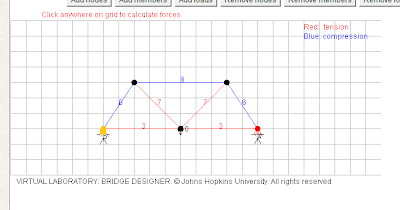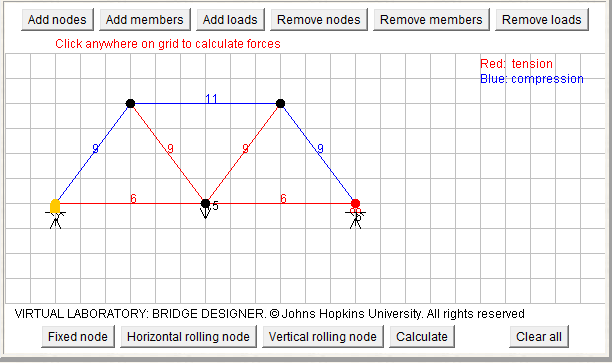This past week we completed our final three foot bridge span
and tested it. In the coming week we will work on A4 and submit it before class
in week 10. The only major accomplishment this week was that our bridge was
able to hold 5 more pounds that we had anticipated. We are facing no major
issues as a team.
I think that each goal was met and exceeded through the
course, if I were to pick one goal that I wish we had more time to explore or
would have gone more in depth with I would say it would be forensic analysis.
The least beneficial goal was the planning, I understand the need to plan and
using the tools we were given at the end of the course I can see why planning
is useful however going through the course I thought that planning was not
beneficial and most of our discoveries were obtained by trial and error. Once
we had these discoveries and were given the mathematical tools our discoveries
were confirmed and we were able to understand why. I also feel that bridge designer
was good for the simple bridge but it did not meet my expectations when it came
to the group knex design. The most beneficial parts of the course were the
physical modeling and teamwork aspects because we were able to test a variety
of ideas and then collaborate to make what we felt was the best design. In the
future I would give a better introduction to WPBD also I would have a block of
wood to resemble the car to make sure that all designs meet the given specs.














